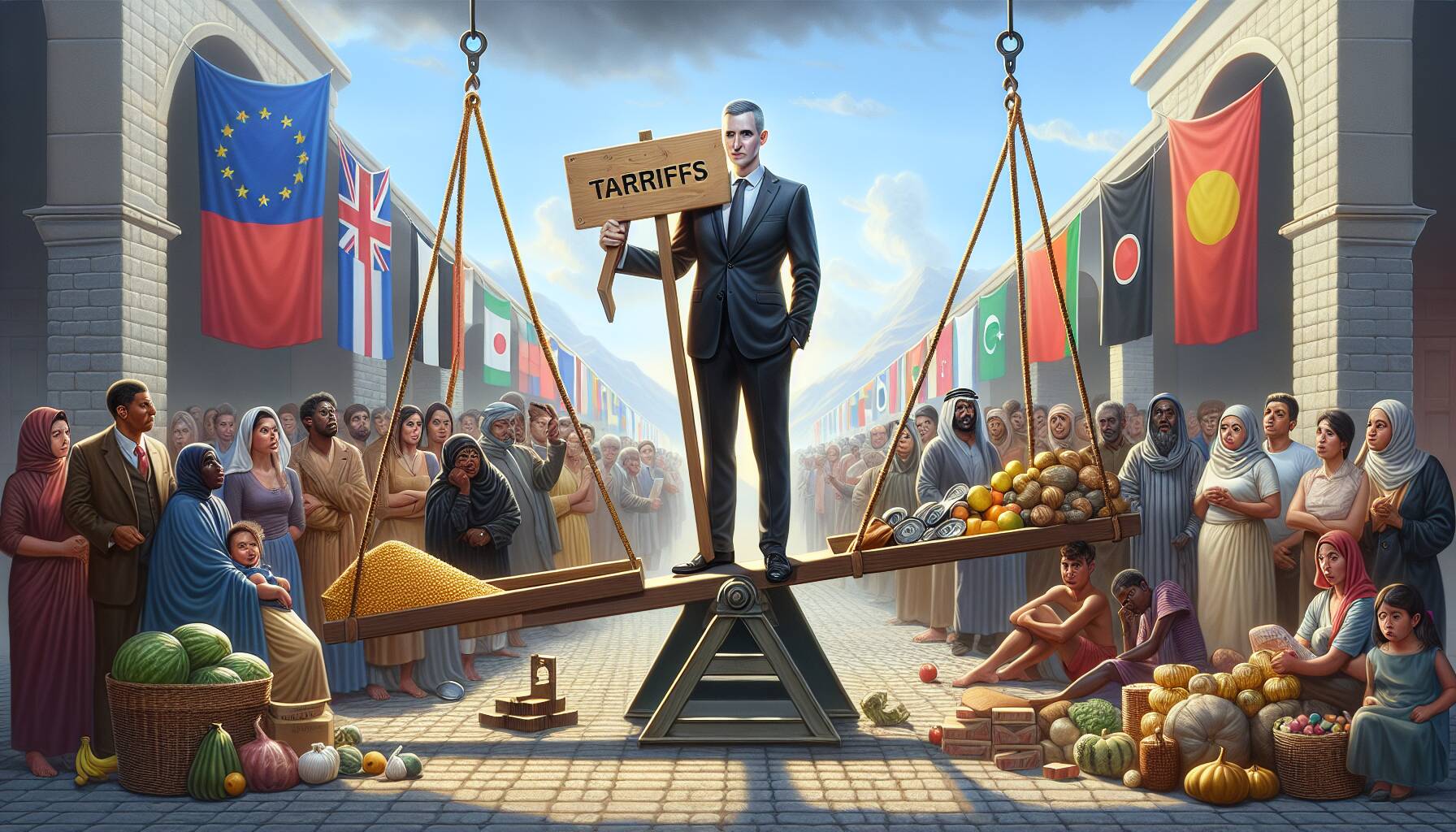This week, U.S. President Donald Trump has ramped up his rhetoric regarding tariffs, signaling a potential shift in trade dynamics. As the administration warns 14 countries of impending higher tariffs set to take effect on August 1, markets appear to remain unconvinced that these measures will be fully implemented. The original three-month pause on tariffs was set to expire on July 9, leading many to speculate about a possible compromise between the U.S. and its trading partners.
Trump communicated on his social media platform that there would be no extension to the August deadline, yet investor sentiment reflects a belief that he may retreat from aggressive tariff strategies. The financial markets have shown notable steadiness in interest rate expectations, with the CME’s FedWatch tool indicating the likelihood of two 25 basis point rate cuts this year, beginning as soon as September. Analysts suggest that traders aren’t overly concerned about immediate inflationary pressures related to potential tariffs, as evidenced by the maintained outlook for rate adjustments.
“Markets seem to believe the adage that Trump always chicken out (TACO), reflecting a lack of panic in response to tariff threats.”
This contrasts sharply with the market reaction observed in March, when Trump’s previous tariff threats led to rapid rate cut pricing. Presently, data indicates that traders anticipate a resolution through negotiations rather than sustained conflict, as seen in the decreasing MOVE index, which measures implied volatility in U.S. Treasury notes.
Equity markets, including the S&P 500, reacted with a minor decline and have since stabilized, while Bitcoin (BTC) remains relatively unresponsive near the $105,000 mark. The broader financial environment seems to indicate an expectation of resolution, with the dollar index showing resilience against other major currencies.
“Both the U.S. equity markets and Bitcoin continue to exhibit a lack of concern regarding Trump’s tariff threats, with Bitcoin trading just above the $105,000 mark.”

Impact of Trump’s Tariff Rhetoric on Financial Markets
The recent escalation in tariff threats by U.S. President Donald Trump has significant implications for various financial markets, though market reactions suggest a level of skepticism about the severity of these threats.
- Intensified Tariff Rhetoric:
- Warnings sent to 14 countries about potential tariffs starting August 1.
- Deadline for tariff decisions set; markets appear to expect a compromise.
- Market Skepticism:
- Investors are not reacting strongly, relying on past behavior of the President to avoid major tariffs.
- Steady expectations for interest rate cuts indicate confidence in a potential resolution.
- Interest Rate Expectations:
- Predictions of two 25 basis point rate cuts this year could mitigate impacts of potential tariffs.
- July rate cut priced out after robust job report, signaling market confidence.
- Equity Markets and Bitcoin Stability:
- Moderate declines in the S&P 500 and Bitcoin suggest limited repercussions from tariff fears.
- Both markets appear resilient despite tariff threats, signaling investor confidence.
- Dollar Index Movements:
- Dollar index rose 0.55%, reflecting strength in the currency amid tariff discussions.
- Stabilization around these levels indicates potential investor confidence in the dollar’s value.
Understanding these dynamics can provide insights into market behaviors, investment strategies, and inflation expectations, ultimately affecting personal financial decisions.
Trump’s Tariff Talks: Market Reactions and Implications
The ongoing discussion surrounding President Trump’s intensified tariff threats has stirred a variety of reactions within financial markets, yet the prevailing sentiment indicates skepticism about real changes occurring. Unlike previous tariff announcements that prompted immediate market volatility, traders appear to dismiss the urgency of these warnings, hinting at a potential negotiation phase instead. This situation mirrors the early tariffs of 2018, which initially caused turmoil but eventually saw markets stabilizing as agreements were reached.
Competitive Advantages: The current inclination among investors is to view Trump’s latest rhetoric as a tactical move rather than a definitive policy change. The prevailing market expectation for rate cuts, even amidst potential tariffs, suggests that financial players are positioning themselves for long-term stability rather than short-term disruptions. This situation favors entities prepared for a dip in rates, including borrowers and equity investors, who stand to gain from lower borrowing costs and potentially rising equity valuations.
Disadvantages: Conversely, industries directly reliant on international trade could face challenges if tariffs do come into effect. This includes sectors like agriculture and manufacturing, which may see increased costs passed down from suppliers, ultimately impacting consumer prices. Companies not prepared for such shifts could struggle to maintain profitability during this period of uncertainty.
In this intricate landscape, entities like exporters or industries heavily dependent on overseas markets may find themselves navigating heightened risks. Smaller firms with limited bandwidth to adapt could encounter significant operational challenges in the face of changing trade dynamics. Meanwhile, investors flocking to stable assets may inadvertently create a competitive disadvantage for startups requiring venture capital, as investors may shy away from higher risk opportunities during tumultuous economic forecasts.














